Article Summary – The Kirov-class was born to hunt NATO carriers and shield Soviet submarines, using nuclear power, long-range missiles, and deep air-defense magazines to dominate the North Atlantic.
-After the USSR’s collapse, only Pyotr Velikiy stayed active while her sisters decayed alongside Russia’s shipyards and budgets.
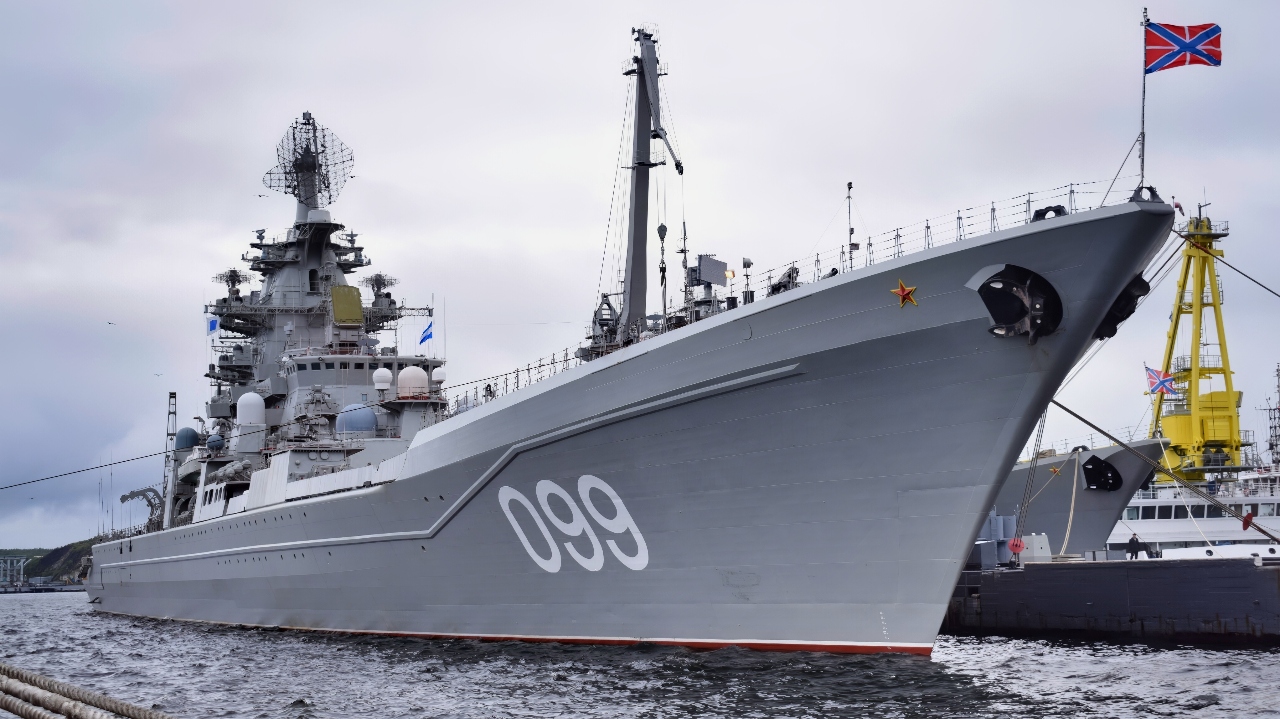
Kirov-Class Russian Navy Cleaned Up. Image Credit: Creative Commons.
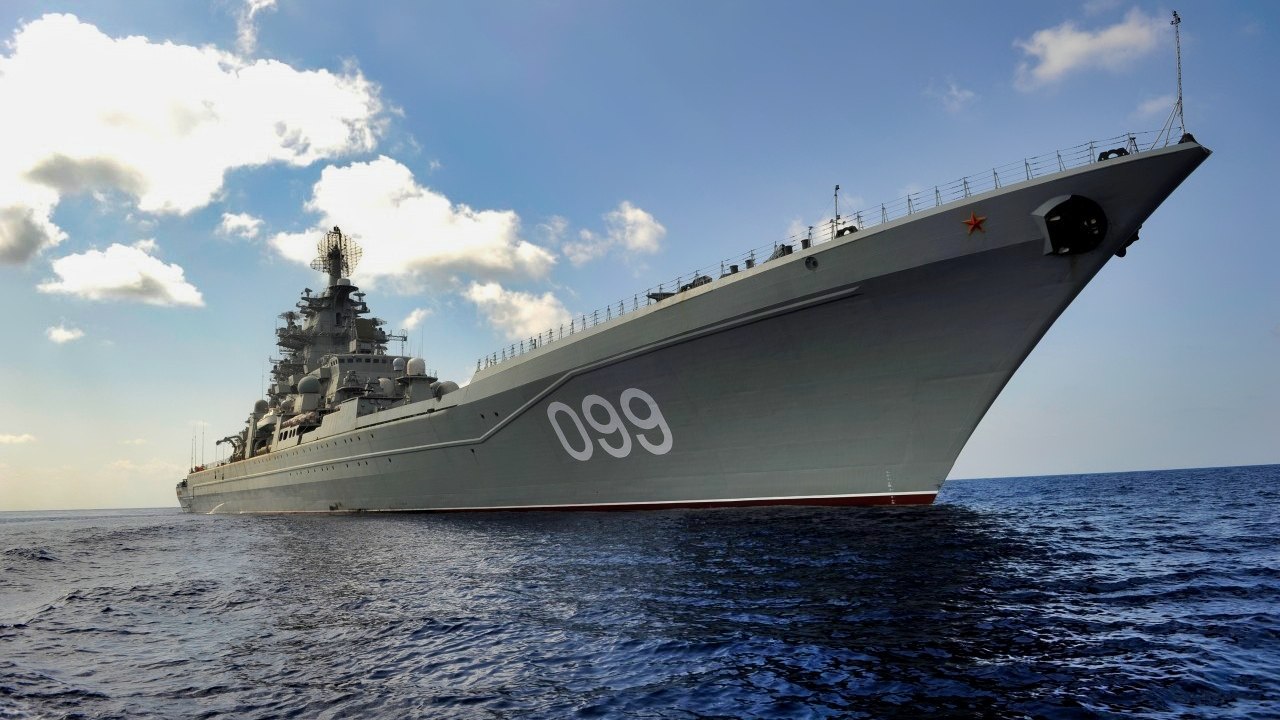
Kirov-Class Battlecruiser Russian Navy. Image Credit: Creative Commons.
-Now Admiral Nakhimov is returning from a decade-long refit packed with universal VLS cells, modern SAMs, new sensors, and a rebuilt power plant.
-She will be the Northern Fleet’s flagship and arsenal ship—but also an expensive, irreplaceable singleton whose value depends on staying close to home waters and surviving in an era of drones and precision strike.
Russia’s Last Nuclear Battlecruiser Is Back: What Admiral Nakhimov Really Brings
The Kirov-class—known in Russia as Project 1144 Orlan—emerged from a very specific late–Cold War vision.
Soviet naval strategists sought blue-water reach, layered air defense, and heavy anti-ship punch to complicate NATO carrier operations in the North Atlantic and Arctic. The solution was audacious: a nuclear-powered, heavily armed surface combatant that could outrun logistics constraints, hold U.S. carrier groups at risk with long-range missiles, and marshal air defenses for the rest of a task group.
This wasn’t prestige for prestige’s sake. The Northern Fleet needed a ship that could push north of the GIUK gap, screen bastions for ballistic-missile submarines, and still threaten sea lines of communication. A nuclear plant promised sustained sprint speed and almost unlimited endurance; vast internal volume meant bigger magazines, more sensors, and the electrical power to run them. The Kirov would be, in effect, a cruiser that took on some of the command-and-control and area-defense functions a carrier air wing might otherwise assume.
The Design Philosophy: Big, Nuclear, And Layered
The Kirov-class Project 1144 combined a nuclear/steam plant with the biggest sensor-and-weapons fit of any non-carrier afloat. The twin reactors fed steam to high-power turbines, giving the class long legs and high sustained speed—exactly what a flagship and missile carrier needed in the Barents and Norwegian seas.
The rest was about layers. At the top of the pyramid sat the ship’s strategic purpose: countering carriers and punching at range. The original main battery was twenty P-700 Granit (SS-N-19) super-heavy anti-ship missiles mounted in canted tubes beneath the forward deck—big, fast, and designed to be launched as coordinated salvos. Backstopping that offensive reach was area air defense, centered on the navalized S-300F Fort system with deep magazines intended to protect not only the ship, but also consorts operating under its umbrella.
Close-in, the designers added short-range SAMs and gun/CIWS to blunt sea-skimming threats. Anti-submarine warfare wasn’t an afterthought: heavyweight torpedo tubes, rocket-propelled depth charges, and dedicated sonars rounded out a balanced blue-water killer that could threaten above and below the surface while staying on station for weeks.
Sensors, Power, And Volume: What Size Buys You on Kirov-Class
Calling Kirov a “battlecruiser” isn’t just Western habit—it reflects what the hull buys you.
The ship’s size allowed:
Multiple large radars with good height-of-eye for early detection and missile guidance.
Redundant command spaces and communications, making the ship a natural flagship.
Magazine depth for both anti-ship offense and air defense—crucial in any sustained fight.
Electrical power headroom for future sensors and combat systems.
The price was complexity. Nuclear propulsion on a surface combatant demands exacting maintenance and a dockyard ecosystem that can handle radiological work, reactor refueling, and specialized safety regimes—costs that multiply with age.
Weapons And Systems: From Granit To VLS
Original fit (Soviet era):
20× P-700 Granit launchers for carrier-killer salvos.
S-300F Fort (naval SA-10/SA-20 family) for area air defense with a magazine sized for fleet protection.
Short-range SAMs (Osa/Kinzhal on different hulls), plus CIWS (AK-630, later Kashtan on Pyotr Velikiy).
ASW suite: 533-mm torpedo tubes, anti-submarine rockets, and powerful sonars.
Dual-purpose guns (originally AK-130) for surface and shore work.
Modernization vector (Admiral Nakhimov):
The defining change is the move to vertical launch systems (VLS) and universal cells. Where 20 Granit tubes once lived, yard photos and official statements point to banks of 3S14 “UKSK” cells able to host Kalibr, Oniks, and Zircon cruise missiles. Air defenses remain deep: reports indicate the Fort/Fort-M family persists, augmented by multiple Pantsir-M point-defense mounts, and updated sensors. The Soviet twin 130 mm has reportedly given way to a modern AK-192M 130 mm mount.
Numbers vary—because Russia hasn’t published a definitive public loadout—but credible open reporting suggests ~80 UKSK cells for strike weapons and a similarly large SAM magazine, together pushing the total VLS count well above any Western surface combatant. That does not automatically equal combat effectiveness; what matters is sensor fusion, reaction time, and doctrine—but it does signal a ship meant to serve as a missile arsenal and air-defense node for a fleet that lacks a healthy carrier arm.
Operational History for Kirov-Class: Four Hulls, Uneven Lives
The class’s story is, bluntly, a tale of big ambition meeting hard reality.
Lead ship (Kirov to Admiral Ushakov) entered service in the early 1980s and made her presence felt in high-visibility cruises. A serious engineering incident in 1990 and post-Soviet austerity effectively ended her career; defueling and lay-up followed, and she was ultimately consigned to disposal.
Second ship (Frunze t0 Admiral Lazarev) operated briefly with the Pacific Fleet before the 1990s gutted budgets. By the mid-2010s, the Navy weighed modernization versus scrapping. The decision: dismantlement in the Far East with a long, staged recycling plan to handle the nuclear plant safely.
Third ship (Kalinin t0 Admiral Nakhimov) served until the late 1990s, then entered an odyssey of storage, stop-start work, and finally a comprehensive modernization at Sevmash. Schedules slipped repeatedly as scope grew and sanctions bit. In August 2025 she finally put to sea for factory and sea trials, with the first phase completed in September and additional testing scheduled in the Barents Sea.
Fourth ship (Yuriy Andropov t0 Pyotr Velikiy) became the visible workhorse—flagship of the Northern Fleet, a regular in Arctic exercises, and the heavy escort when Russia’s tired carrier Admiral Kuznetsov went south to Syria in 2016. While Pyotr Velikiy underwent only a modest refit, the ship kept the “capital ship” flame alive through a lean decade. Today, Moscow openly signals that Pyotr Velikiy will likely retire once Nakhimov is fully back—avoiding another decade-long, budget-draining rebuild.
The Long Hiatus: Why Modernizing A Nuclear Giant Took So Long
A ship the size of Admiral Nakhimov is a floating system-of-systems. The refit wasn’t a paint-and-wiring job; it gutted missile farms, replaced combat systems, rewired power distribution, inserted new radars, swapped the main gun, and performed heavy work on a nuclear/steam plant that had sat cold for years.
Three forces dragged the calendar to the right:
Scope creep—Moscow kept asking for “modern shipyard miracles,” from universal VLS to new point defenses and sensors, turning a refit into a near-rebuild.
Industrial churn—Russia’s yards carried submarine backlogs and complex legacy projects; specialized labor and facilities are finite, especially for nuclear surface ships.
Sanctions and war—post-2014 and especially post-2022 sanctions tightened access to microelectronics, advanced machine tools, and specialty materials; the Ukraine war then diverted talent and funding to produce munitions now, not prestige ships later.
Costs ballooned—open reporting places the bill in the hundreds of billions of rubles—and deadlines slid from the late 2010s to the mid-2020s. Only in 2025 has the ship run extended trials at sea with reactors hot and a visible new topside fit.
The Reemergence Of Admiral Nakhimov
When Nakhimov left Severodvinsk for the White Sea in August 2025, it was the first time she’d stretched her legs since 1997. The first trial phase focused on propulsion and core systems and returned to the pier on schedule; planners now point to the Barents Sea for more demanding evolutions—sea-keeping, sensors, combat-system shakedowns, and weapons handling.
What’s visibly changed?
New main gun (AK-192M) forward.
New radars and electronic suites atop reworked masts.
Pantsir-M mounts flanking the superstructure for close-in defense.
The telltale removal of Granit tubes in favor of VLS farms amidships and forward.
What’s less clear (publicly) is the exact count and mix of the cells and the final air-defense architecture. Competing claims exist, but the consensus is that Nakhimov carries a very large strike loadout (Kalibr/Oniks/Zircon) plus a deep SAM magazine—with the ship intended to serve as flagship and air-defense centerpiece for Northern Fleet surface groups.
Did The Kirovs See Combat? What They Actually Did
These Kirov-class ships were deterrent demonstrators more than gunfighters. Kirovs shadowed NATO groups, exercised in the Arctic, and served as visible symbols of a global navy. In the post-Soviet era, Pyotr Velikiy showed the flag and escorted deployments (notably the 2016 carrier cruise). Their wartime impact was indirect: the class made Western planners account for long-range anti-ship salvos screened by robust area air defense—an operational problem that never fully went away.
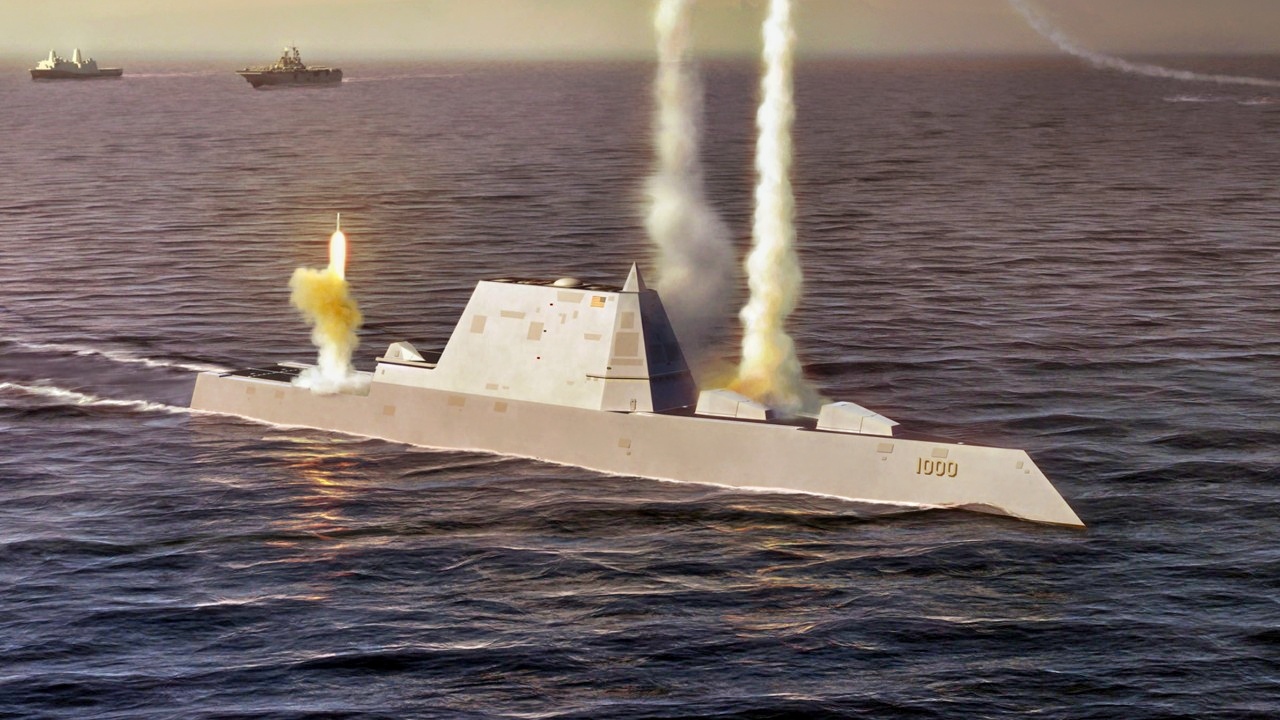
The US Navy’s troubled Zumwalt-class destroyers are being revitalized with the integration of Conventional Prompt Strike (CPS) hypersonic missiles, transforming them into powerful long-range strike platforms. The original class of 32 ships was cut to just three after its Advanced Gun System failed due to exorbitant costs. Now, these stealthy, $8 billion warships are having their defunct guns replaced with vertical launch tubes for hypersonic weapons. This upgrade will dramatically increase their strike range from a mere 63 miles to over 1,700 miles, making the Zumwalts relevant and formidable assets for deterring adversaries like China in the 21st century.
Retirement, And Why Only One Came Back
By the 2010s, reality hardened. Lead-ship aging, radiological risks, and corrosion made overhauls of Ushakov and Lazarev impractical; safe dismantlement contracts moved forward in the Far East and at Northern yards. The Navy bet everything on Nakhimov—a single “super surface combatant”—while keeping Pyotr Velikiy ticking with limited updates.
That choice reflects tradeoffs Russia cannot escape: the surface fleet must split finite rubles across submarines, corvettes, frigates, coastal missiles, and shipyard survival—under wartime sanction constraints.
In that budget, one reborn nuclear battlecruiser is already a stretch; two would be ruinous.
What Nakhimov Reportedly Gained
While Moscow’s public data are sparse, consistent threads in imagery and industry statements point to the following upgrade themes for this Kirov-class warship:
Universal Strike Cells: Replacement of the Granit battery with ~80 UKSK (3S14) cells capable of Kalibr land-attack/AShM, Oniks supersonic AShM, and Zircon hypersonic missiles. That turns Nakhimov into a regional arsenal ship, able to launch massed salvos or mix land-attack and anti-ship loads.
Deep Air Defense: Retention and modernization of Fort/ Fort-M (S-300F family) with a very large magazine, plus several Pantsir-M mounts for point defense against drones, sea-skimmers, and leakers. Some Russian commentary has hinted at S-400–family integration; what’s certain is that the ship remains a long-range SAM node.
Gun, Sensors, Combat System: A new AK-192M 130 mm gun replaces the Soviet twin; masts and arrays appear renewed; combat systems and networks are updated for modern missile employment and fleet coordination.
Survivability & Power: Nuclear plant overhaul, auxiliary upgrades, and new electrical distribution to support sensors and weapons.
If even two-thirds of that ambition is realized as advertised, Nakhimov becomes the most heavily armed surface combatant outside carrier aviation—at least on paper.
The Bill, The Delays, And The Opportunity Cost
The modernized cruiser’s price tag and timeline are the elephant in the dry dock. After well over a decade of work, the ship only now completes early sea trials. Open-source cost estimates place the project north of 200 billion rubles (several billion dollars). That money could have bought multiple frigates or new corvettes, each easier to crew and sustain—and more immediately useful for sea denial close to home.
Meanwhile, Russia’s sole carrier limps through endless yard time. In such a fleet, Nakhimov will be asked to be everything at once: flagship, air-defense center, arsenal ship, and symbol. That concentration of roles invites a different risk: a single point of failure.
Kirov-Class: Is The Reboot Worth It?
The case for “yes.” A modernized Nakhimov gives the Northern Fleet a true flagship with reach. In peacetime, it projects status and anchors large exercises. In a crisis, its VLS depth provides a standoff punch against shore targets and maritime groupings while its SAMs thicken the air-defense web. Against NATO, a single cruiser with mixed Kalibr/Oniks/Zircon complicates planning, even if only as a distributed-launch platform protected by geography and coastal aviation.
The case for “no.” The war in Ukraine exposed the fragility of Russia’s defense-industrial base under sanctions. Crewing and maintaining one nuclear cruiser diverts scarce technicians and funds from numerous smaller hulls whose aggregate presence matters more in the Arctic and Baltic. The risk/reward calculus looks worse in a high-end fight where NATO ISR would track a capital ship relentlessly. If Pyotr Velikiy truly retires rather than undergo a similar refit, Nakhimov becomes a singleton—hard to replace, hard to deploy far, and awkward to risk.
What Comes Next For Admiral Nakhimov
The near-term steps are straightforward and unforgiving:
Extended trials in the Barents Sea, testing propulsion at tempo, validating sensors, and wringing out combat systems.
Weapons qualifications and live firings—especially complex given the number of missile families the ship is advertised to carry.
Crew workups and fleet integration—doctrine won’t write itself, and the ship’s command-and-control role demands careful choreography with Northern Fleet aviation and submarines.
If trial phases continue to stay on script, the cruiser will return to operational service as the Northern Fleet’s flagship. In parallel, expect quiet steps toward Pyotr Velikiy’s drawdown—either long reserve or formal decommissioning—freeing crew and spares.
The Legacy Of The Kirov Class—And A Realistic Future
No other navy finished anything quite like Project 1144. The Kirovs proved that size can buy magazine depth, sensor reach, and command capacity—but also that such ships are industrial hostages to economic tides. The Soviet Union could build them; post-Soviet Russia could barely keep one.
Nakhimov’s rebirth is both an achievement and an admission. It validates that Russia’s yards can still pull off a once-in-a-generation refit under pressure; it also admits that the fleet can afford only one such marvel. In an era of cheap drones, precision missiles, and pervasive ISR, the Kirov idea remains intellectually seductive—one ship, many roles—but materially fragile.
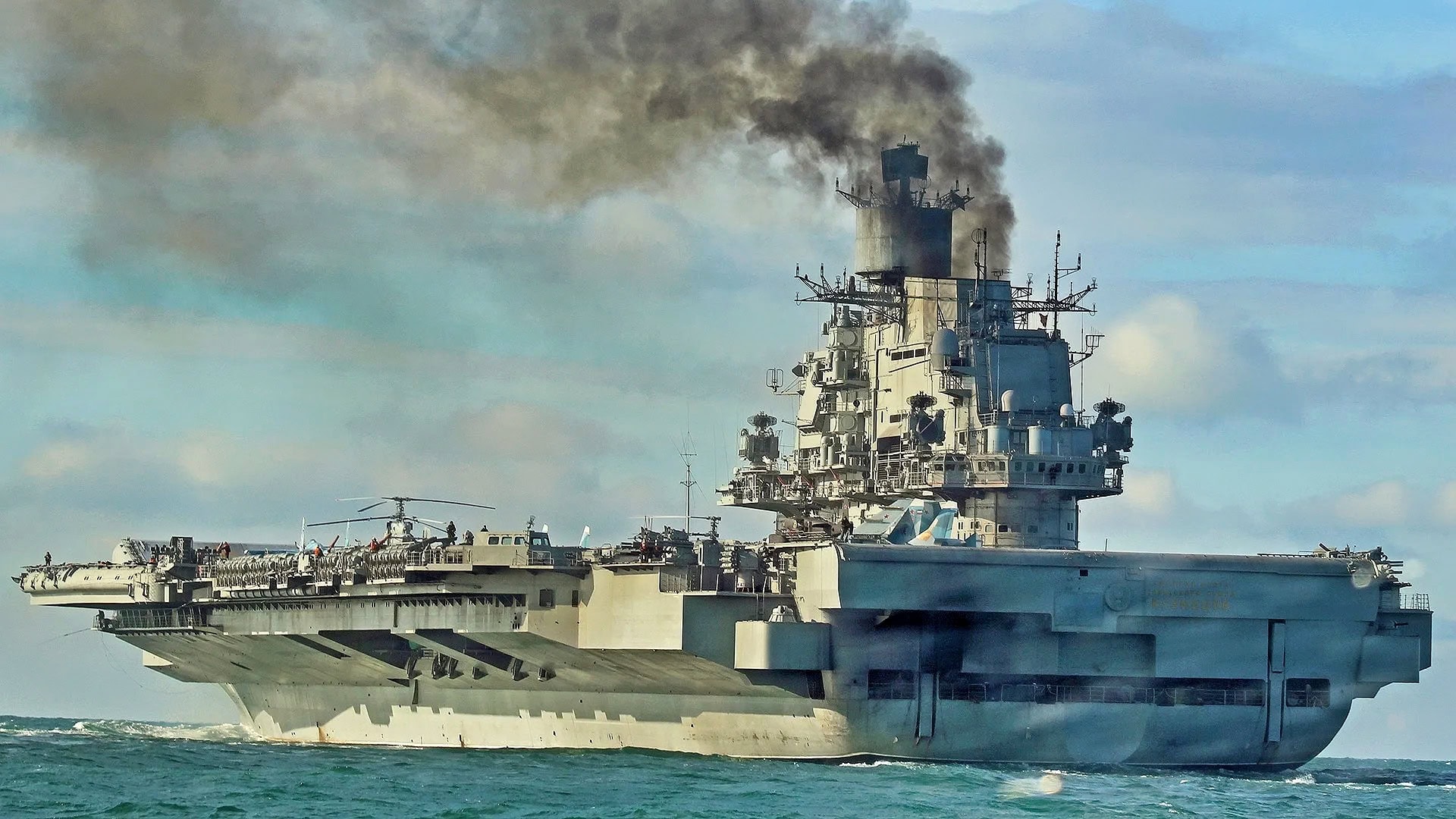
Admiral Kuznetsov Russian Navy. Image Credit: Creative Commons.
Will the reboot pay off? If Moscow uses Nakhimov as a mobile arsenal and air-defense hub close to home waters, with layered cover and modest ambitions, then yes—deterrence and prestige justify the spend. If it is sailed as a symbol into harm’s way without a carrier’s air umbrella and robust escorts, it risks becoming a single-target strategic liability. The class was born to counter carriers; without carriers of its own fleet to shape the fight, the last Kirov must instead play supporting lead—loud enough to be heard, careful enough to survive.
About the Author: Harry J. Kazianis
Harry J. Kazianis (@Grecianformula) is Editor-In-Chief and President of National Security Journal. He was the former Senior Director of National Security Affairs at the Center for the National Interest (CFTNI), a foreign policy think tank founded by Richard Nixon based in Washington, DC. Harry has over a decade of experience in think tanks and national security publishing. His ideas have been published in the NY Times, The Washington Post, The Wall Street Journal, CNN, and many other outlets worldwide. He has held positions at CSIS, the Heritage Foundation, the University of Nottingham, and several other institutions related to national security research and studies. He is the former Executive Editor of the National Interest and the Diplomat. He holds a Master’s degree focusing on international affairs from Harvard University.









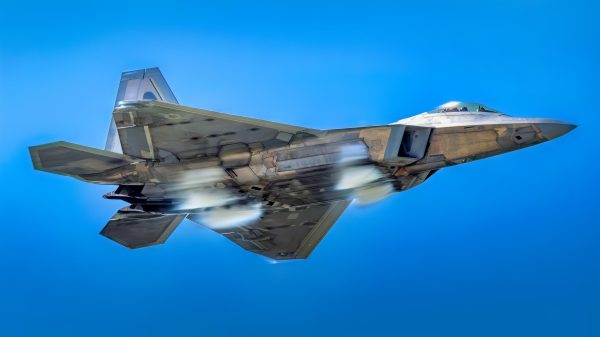
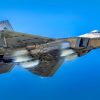
M Churills MM1(SS)
September 23, 2025 at 11:32 am
Useless ship. Like Bismark and Tirpitz. Wouldn’t last a day with current sub fleet.
Ghost_Tomahawk
September 23, 2025 at 2:14 pm
This vessel is worth is weight as just a deterrent to Russian waters it wants to control. The war in Ukraine will end one day. Build your military not just for today but for tomorrow. The US retired F14s with no replacement. The US is retiring Aegis cruisers without a replacement. The US retired the Iowas without a replacement.
Corvettes and frigates is not a Navy. Russia will end Ukraine in better shape than they entered it and will then turn their resources towards upgrading their fleet.
The US is stuck in the past and is more than happy to keep being an arms dealer while depleting their arms for other nations. We had better dump the parasites and invest in the shortcomings in our military
1. A true replacement for the F14. We need range over the horizon that can defend from long range missiles and planes.
2. Hull for hull replacement for cruisers. This is where replacing Iowas comes from. A cruiser with 6 16inch battery at the bow and VLS in the rear and tons of anti air defense to protect the carriers. Sophisticated AEGIS and automation to limit crew size.
3. Scrap the F35 program. 130+ million a plane is a nonstarter. Modern 4th gen planes and drone operated electronic warfare is vastly better than crippling expensive stealth planes that have limited abilities and soaring maintenance costs.
Paul
September 23, 2025 at 2:18 pm
Just something for Ukraine to sink. Piece of cake for a country without a navy.
Lance
September 23, 2025 at 2:42 pm
And that message is really what? Hey, look at our big poorly thought out ship that was obsolete when we made it and worse now?
It wouldn’t even leave port if there was an actual war with NATO.
Ray Shewmaker
September 23, 2025 at 6:10 pm
Such a BIG BIG TARGET. THE radars from early WW2 could find it. And if lucky to survive any combat. Impossible to rearm at Sea.
Ray Shewmaker
September 23, 2025 at 6:21 pm
The Ships and planes were suited for their time. Small ships now carry the firepower equal in some cases the total Destructive power of whole wars. Size in the case of an Aircraft Carrier protected by their Battle Group still applies force. Counting Assault Ships armed with F-35’s the United States has approximately 30 Aircraft Carrier’s.
Joe
September 23, 2025 at 6:23 pm
They certainly won’t be hand delivering it.
Ollie
September 23, 2025 at 9:08 pm
Nice , big ( stealth ) target , it’s like china’s three George’s dam ……… A BIG BEAUTIFUL TARGET
Boris Sorokovsky
September 23, 2025 at 10:50 pm
Bring it on. Where is the muskva?
Noice
September 24, 2025 at 9:20 am
No match for a simple yet sophisticated sea drone 😀
Krystal cane
October 9, 2025 at 12:39 pm
Is the message Trump loves semen because he loved to play the in the Navy song from village people and dance to it 😂😂😂😂👽👽🤣🤪🤪🤪😘😘😘😍😍😍🤩🤩😂😂🤣🤣😭😭
Krystal cane
October 26, 2025 at 8:14 pm
Is the message in the Navy by YMCA Donald Trump’s favorite village people song. he wanted to be the semen lol